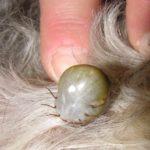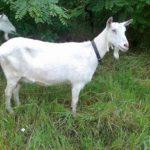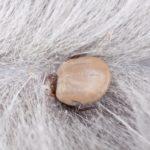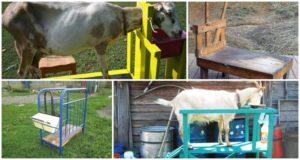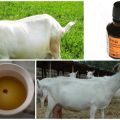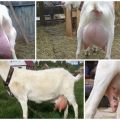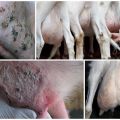Rules and remedies for treating goats from ticks and what to do with a parasite bite
The harm caused to animals by ticks is extremely great. Therefore, prophylactic treatment of all goats against ticks is an important procedure. The event is recommended to be carried out during the period of pest activity (spring and autumn). But it is necessary to inspect animals regularly after grazing. If it is difficult to get rid of pests, sometimes a cardinal remedy is used - animal shearing.
Why are ticks dangerous?
Most often, ticks are located on the lower branches of trees, on bushes or in tall grass. Arthropods stick to sheep imperceptibly and painlessly, since the saliva secreted at the time of the bite contains anesthetics, and the skin loses sensitivity. Ticks are not only carriers of infections, but also pathogens, because they retain viruses in their body for several years.
The bite can cause various diseases (borreliosis, psoroptosis, piroplasmosis, tick paralysis, encephalitis, spotted fever). A significant number of mites on the body of an animal can cause anemia. A pest that carries encephalitis is especially dangerous, because when drinking unboiled milk, the risk of human infection increases.
Signs and symptoms
A bite can lead to the development of various diseases with specific symptoms. But the owner, first of all, should be alerted by the apathetic state of the animal. The following signs of infection are also observed:
- increased thirst in animals;
- severe itching. On the combed areas, wool falls out, areas of the skin are exposed;
- the volume of milk yield decreases;
- the body temperature of the goat rises to 41 ° C;
- about two days after the bite, the mucous membrane of the eyes becomes yellowish;
- after three to four days, the goats lose a lot of weight, lay on the bedding and cannot rise on their own;
- after 5-6 days, the animal dies.
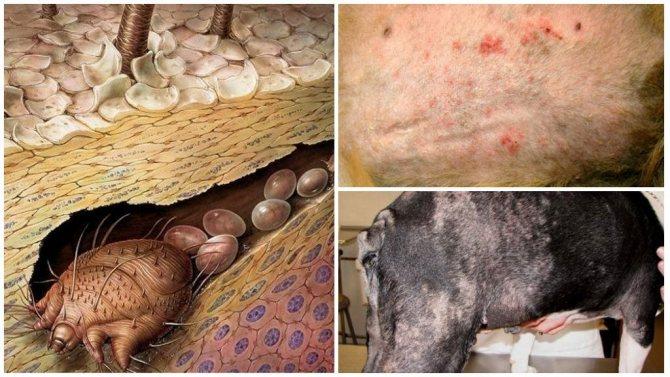
Infection with tick bites can develop in three forms: acute, chronic, latent. The greatest danger is posed by the acute course of infection: the wool crumbles, poor appetite leads to severe exhaustion and death. The chronic form is expressed in moderate itching.
If you do not start treatment on time, then after a few months the infection takes on an acute form. With a latent form, there is a slight itching, mild symptoms of the disease.
What to do if a goat is bitten by a tick?
After the animals return from the pasture, they must be carefully examined. Due to the thick coat, it is sometimes difficult to see ticks on the body of animals. Therefore, it is advisable to touch the pets, since when a bite is formed on the skin, swelling with a diameter of 0.7-1.5 cm is formed. If a bite is found, the skin area is wiped with alcohol.It is recommended to remove the pest in several steps:
- make a free loop from cotton thread;
- gently loop the tick body;
- in order to completely pull out the pest, they make swaying movements with a thread - left and right;
- the bite site is treated with disinfectants.
Important! When using tweezers, do not press on the tick - they gently grab it and pull it out with a twisting motion.
When removing pests, it is not recommended to use fatty creams or oil products. If clinical symptoms appear, you should contact your veterinarian. Naturally, it is easier to prevent bites than to cure diseases of animals. Therefore, in order to protect pets, they carry out all kinds of prevention.
Preventive actions
The most optimal measure to reduce the likelihood of tick attacks on animals is the clearing and improvement of grazing areas. Dried foliage is removed, heavily grown grass is mowed, blockages from dry branches are cleared. If there are doubts about the cleanliness of the pasture, you can treat the perimeter around the site with organophosphate preparations and synthetic pyrethroids (carried out by the appropriate organizations). It is also necessary to spray the area where animals are kept with a solution of creolin. During the period of active reproduction of ticks, it is advisable to bathe goats more often.
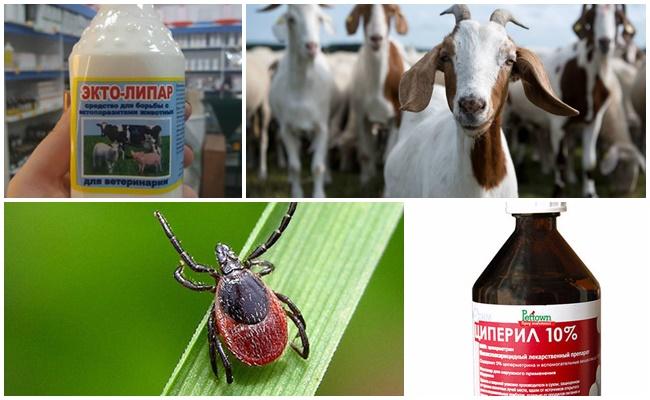
To protect pets from bites, experienced farmers treat animals before grazing with a 10% solution of "Cyperil". The wool of adults is soaked with a foam sponge and left to dry. It is easier to bathe kids older than two weeks in a solution (while protecting the mouth and nose from liquid ingress). Also, the drug "Ectolipar" is used for processing, the effect of which lasts up to three months (after processing, milk cannot be consumed for three days).
Can you drink milk from an affected goat?
Human infection with encephalitis occurs by consuming raw milk from an affected animal. Affected goats have a loss of appetite, lethargy, and paralysis of the hind limbs. The milk produced becomes reddish. After settling at the bottom of the container, a reddish slimy precipitate forms.
It should be borne in mind that the virus persists in milk for 8-9 days after infection. Therefore, for preventive purposes, it is recommended to consume milk only after boiling. The causative agent of the disease is destroyed in milk with a temperature of 60-65 ° C after 20 minutes. To completely destroy the virus, the liquid is boiled for 2-2.5 minutes.
The main thing is not to panic when a tick is found on the pet's body. You should try to pull out the pest yourself. In difficult cases or when symptoms of infection appear, immediately contact a veterinarian. To prevent infection, they practice regular examination of pets after grazing, treatment of animals with acaricidal agents.
